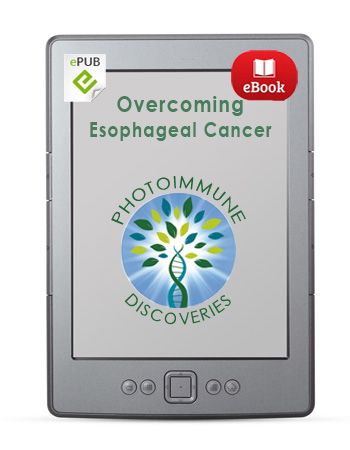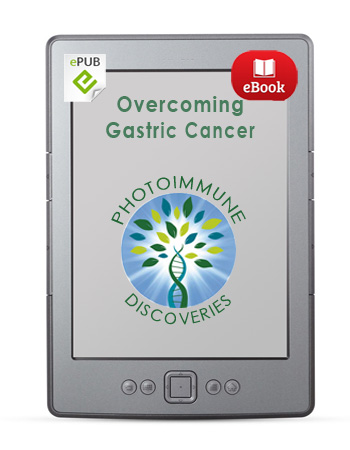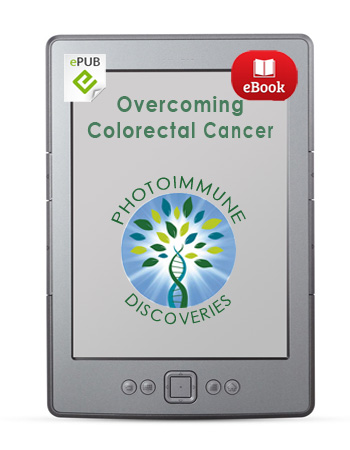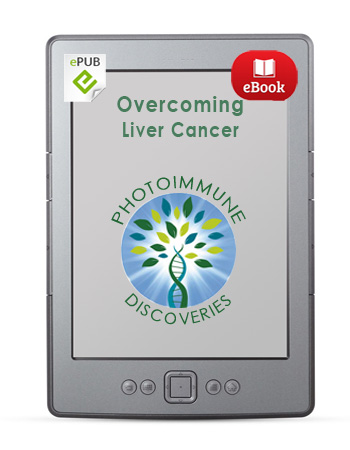Description
Overcoming Esophageal Cancer
The Promise of Photodynamic Therapy and Other Innovative Therapies
Esophageal cancer is a deadly cancer that has attracted much attention in recent decades because of its rapid spread throughout much of the industrialized world. In both North America and Western Europe, the steady increase in esophageal cancer has alarmed public health scientists throughout the world. Between 1975 and 2004, for example, there was a fourfold increase in the incidence of esophageal adenocarcinoma among white women and men in the United States. In most cases, the cancer is diagnosed at an advanced stage when it is more difficult to treat, thus more lethal.
Overcoming Esophageal Cancer: The Promise of Photodynamic Therapy and Other Innovative Therapies provides a new perspective on new prevention and treatment strategies that could help reverse the rising tide of esophageal cancer. A central emphasis is placed on the astounding cancer-fighting potential of Photomedicine (light-based medicine). Though the therapeutic applications of light date back thousands of years, it is only within the past few decades that high-tech developments in laser technology as well as non-laser light have enabled the medical profession to realize the true healing potential of light.
In Part 1, the different types and manifestations of esophageal cancer are explored, along with the cancer’s tendency to develop from the benign condition known as Barrett’s esophagus. Now considered to be a major risk factor for developing esophageal cancer, Barrett’s esophagus is a condition in which the squamous cell lining of the esophagus is replaced by an intestinal-type lining with mucus-secreting cells. It is more common in older people and strongly linked to the problem known as esophageal reflux (acidic juices issuing up from the stomach into the esophagus).
Key risk factors for esophageal cancer are also discussed, including the roles of alcohol, tobacco smoke, red meat, cured meats (e.g., bacon and sausages), sweets and sugar, and lack of vegetables and fruits in the diet. One’s chances of getting esophageal cancer are highest if you have a history of long-term exposure to one or more of these risk factors.
The end of Part 1 discusses key diagnostic and treatment strategies for esophageal cancer. Recent improvements in surgical techniques, as well as in chemotherapy and radiation approaches, have improved the chances of long-term survival for patients with early-stage esophageal cancer. Despite this progress, patients with advanced forms of the disease still fare very poorly. In many cases, the cancer is detected too late and is thus deemed to be “terminal” or incurable.
Part 2 of Overcoming Esophageal Cancer discusses the various benefits of light-sensitizing treatments, or photodynamic therapy (PDT), as well as other photomedical applications, notably photodynamic diagnosis (PDD). Conventional treatment for more advanced-stage esophageal cancer is directed at reducing symptoms and perhaps slowing the spread of the disease. It seems clear, however, that more humane treatment options are needed for this highly aggressive form of cancer, and PDT and related light-based treatments could offer a viable solution, as this ebook clearly illustrates.
An excerpt from the book:
“Conventional surgery for esophageal cancer has traditionally resulted in a wide range of serious complications—including heart problems, postoperative bleeding, anastomotic leakage (leakage in the sutured area following the surgery), breathing complications, and even death in about one in 20 cases. Also heightening the risk of surgery-related complications are (1) advanced patient age and (2) receiving chemotherapy or radiotherapy prior to the surgery. It is also important to recognize that these complications tend to worsen the prognosis following the operation. PDT, however, seems to be a viable alternative.
“In a clinical study in Russia, esophageal cancer was successfully treated by Dr. Victor Sokolov using a number of photosensitizers, including Bremachlorin®. PDT was performed in 48 esophageal cancer patients (total 48 lesions) from 1992 to 2006. Complete regressions were observed in 77% of esophageal cancer lesions, and partial regressions in 23% of cases. The follow-up period was up to 11 years, and median survival was 4.59 years.
Once again, avoidance of the surgical complications detailed above makes PDT an especially attractive option for many patients with esophageal cancer. A number of randomized clinical trials have evaluated PDT in patients with Barrett’s esophagus who also had either high-grade dysplasia or superficial esophageal cancer (cancer on the outer layers of esophageal tissue, which is readily accessible to light treatment).
“In one clinical trial involving 102 patients, complete removal of dysplasia or carcinoma was accomplished after just one course of PDT in over half of patients (56%). Those patients not included in this complete response tally still had the option of surgery afterward, and when PDT failed to remove the dysplasia or carcinoma, subsequent surgery was successful in three out of four cases.
“Thus, it seems quite plausible that PDT helped set the stage for surgical success, because it had reduced the overall tumor burden, i.e., the bulk of the disease. However, it should be noted that many patients experienced prolonged photosensitivity reactions when going out into the sunlight, a common side effect of PDT. Despite this important limitation, the researchers concluded that PDT is a safe and highly effective first-line treatment for patients with Barrett’s dysplasia and superficial esophageal cancer…
“Another important study was a randomized clinical trial conducted by the International Photodynamic Group for High-Grade Dysplasia in Barrett’s Esophagus. This landmark study was a prospective, randomized, controlled, multicenter clinical trial. The study enrolled 128 patients and compared the effects of drug treatment with omeprazole to treatment with both omeprazole and PDT.
“The main finding of the International Photodynamic Group’s study was a lower progression rate of invasive esophageal cancer among patients who also received PDT. More specifically, after five years, the PDT-omeprazole group had half the high-grade dysplasia of the group treated with omeprazole alone. Similarly, the likelihood of cancer occurring in the PDT group was about half that of the omeprazole group (15% versus 29%). As might be expected, patients in the PDT group also had significantly less progression of their disease. Based on this research, the US Food and Drug Administration approved PDT for patients with Barrett’s esophagus and high-grade dysplasia who do not undergo surgery…
“For early-stage and precancerous disease of the esophagus, PDT represents a cost-effective alternative to surgery and intense endoscopic monitoring. Nevertheless, the treatment does carry the risks of skin phototoxicity, severe chest pain, nausea, and stricture formation—all of which depend on individual factors that your physician will take into account before you begin treatment. It is likely that these risks will continue to diminish with the further development of new photosensitizers and more integrated PDT regimens, possibly including the addition of hyperbaric oxygen therapy.”
Part 3 considers promising future directions for research on immunotherapy and other innovative therapies, while Part 4 lays out the long-term control strategies that may help keep esophageal cancer from developing and progressing into a life-threatening disease.
Lastly, photodynamic diagnosis (photodiagnosis) may play a central role in the future prevention of esophageal cancer. By detecting precancerous or high-risk situations (Barrett’s esophagus and dysplasia), photodiagnosis provides vital information for anyone hoping to avoid the eventual development of esophageal cancer. This information can be used to help alert you, the patient, to the need to be more aggressively proactive in your efforts to ward off cancer, perhaps using a combination of nutritional, herbal, and innovative medical strategies.
The ebook’s appendix includes a special discussion about two light-sensitizing substances, a dietary supplement called Bremachlorophyll, and a unique medicine called Bremachlorin. Because of its diverse effects against cancer, Bremachlorin-PDT is likely to revolutionize the way Photomedicine is incorporated into modern cancer treatment.






 English
English Français
Français Deutsch
Deutsch Nederlands
Nederlands